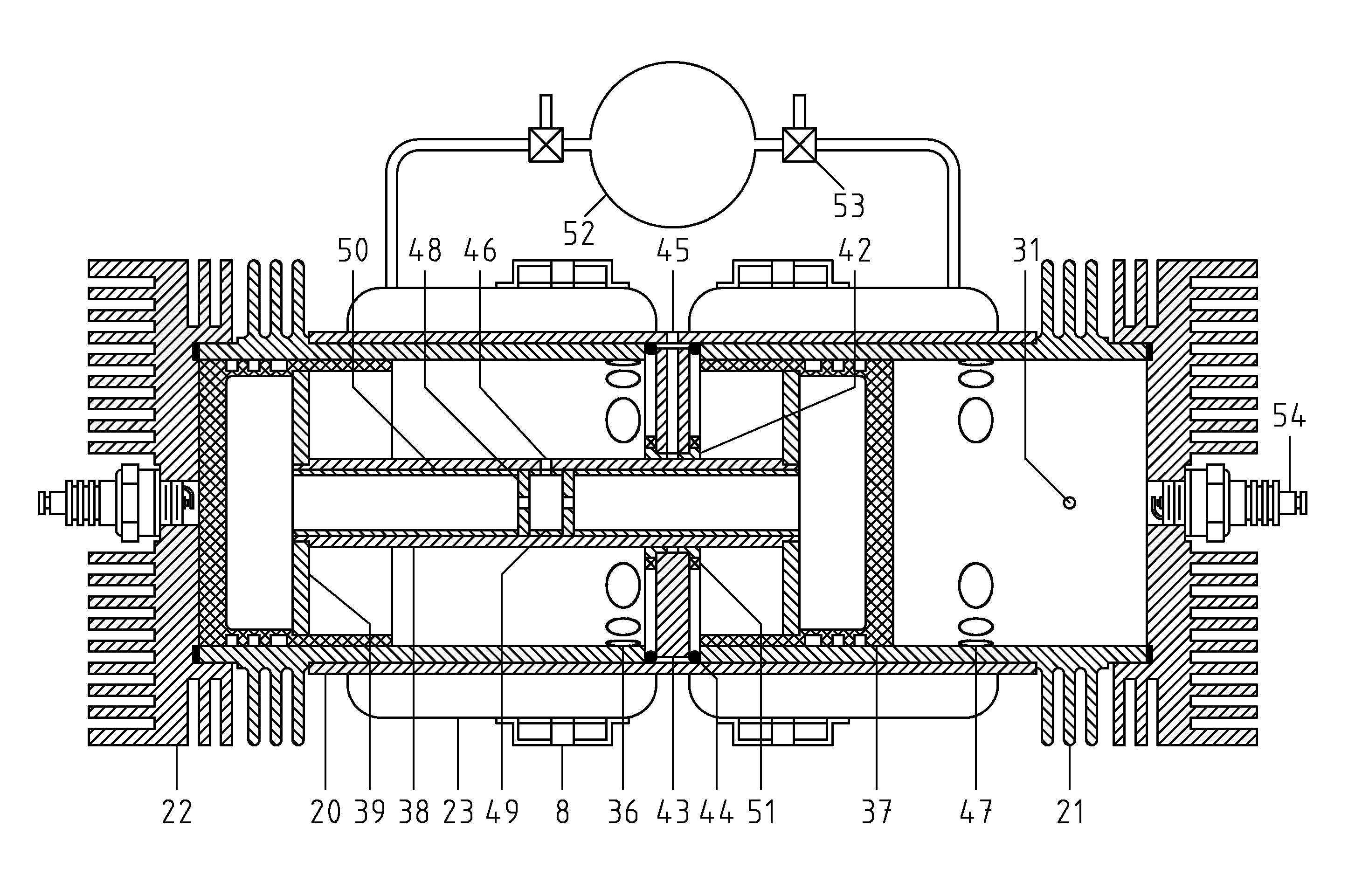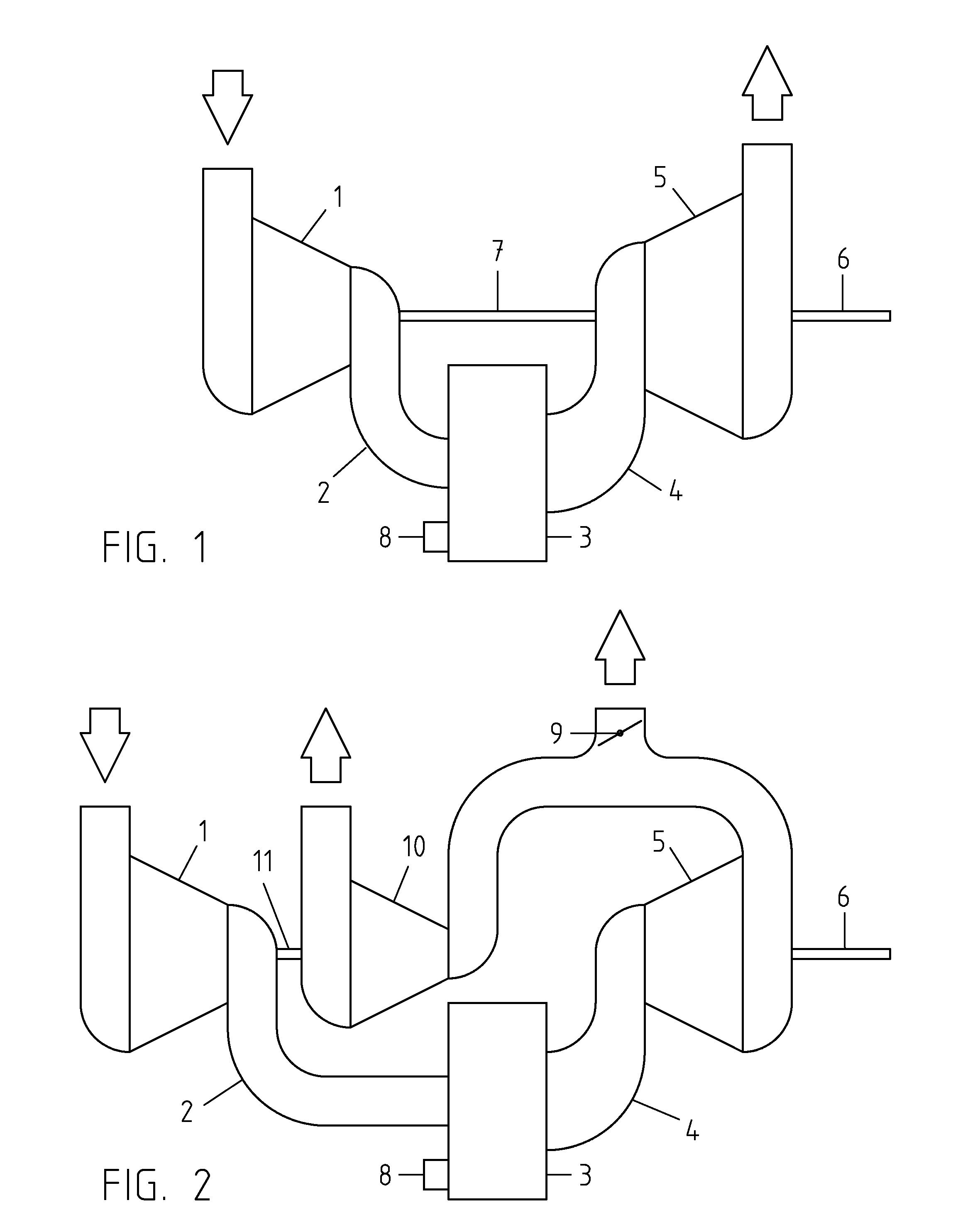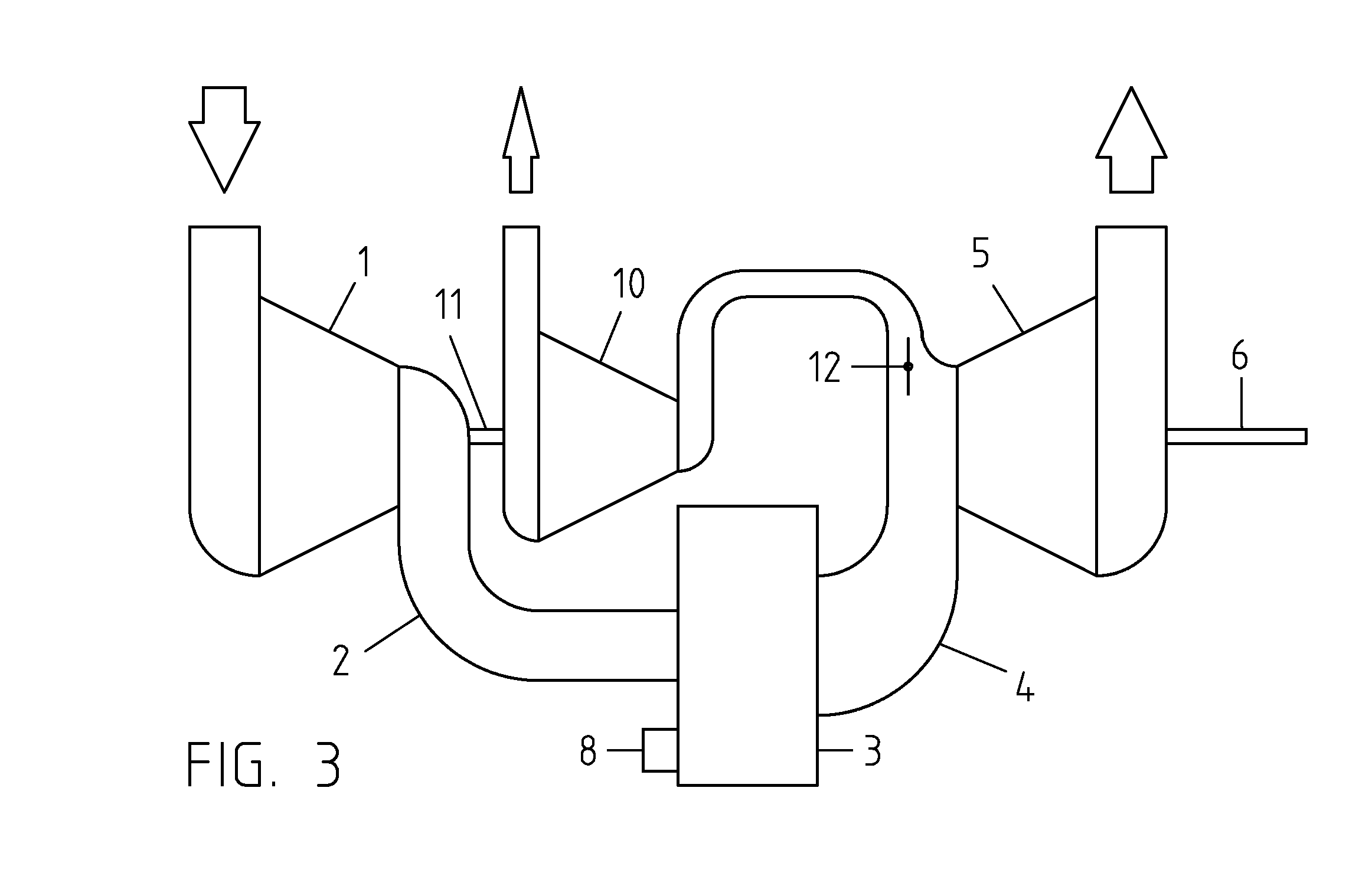Double-Acting, Two-Stroke HCCI Compound Free-Piston Rotating-Shaft Engine
- Summary
- Abstract
- Description
- Claims
- Application Information
AI Technical Summary
Benefits of technology
Problems solved by technology
Method used
Image
Examples
Embodiment Construction
[0032]FIG. 1 shows one possible arrangement that might be compared to a supercharged piston engine where the crank and connecting-rod assembly has been replaced by an aerodynamic power turbine or positive-displacement air motor. Intake air (represented by the downward-pointing arrow) may be compressed in precompressor element 1, which may be an aerodynamic or positive-displacement unit, depending on the application. Precompressor 1, if used, is a high-volume, low-pressure device compared to the oscillating piston in the free-piston component of the engine, which may have a compression ratio of much greater than 20:1, depending on operating conditions. Intake duct work 2 conducts the pre-compressed air to the intake ports of the free-piston gas generator 3. The high-temperature, high-pressure gas from gas generator 3 is conducted by exhaust duct work 4 to rotary device 5, which may be an axial or centrifugal turbine, an impulse turbine, or a positive-displacement air motor that may u...
PUM
 Login to View More
Login to View More Abstract
Description
Claims
Application Information
 Login to View More
Login to View More - Generate Ideas
- Intellectual Property
- Life Sciences
- Materials
- Tech Scout
- Unparalleled Data Quality
- Higher Quality Content
- 60% Fewer Hallucinations
Browse by: Latest US Patents, China's latest patents, Technical Efficacy Thesaurus, Application Domain, Technology Topic, Popular Technical Reports.
© 2025 PatSnap. All rights reserved.Legal|Privacy policy|Modern Slavery Act Transparency Statement|Sitemap|About US| Contact US: help@patsnap.com



